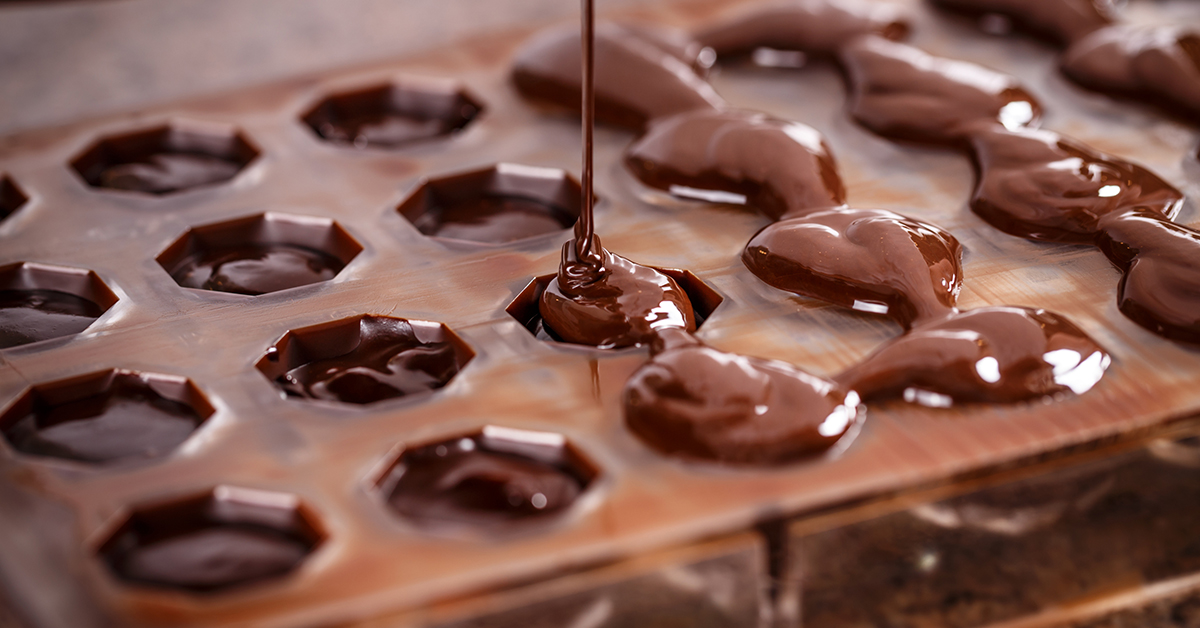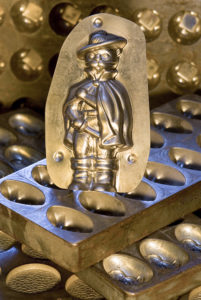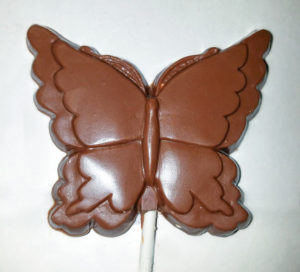
One of the things we enjoy about writing this blog is that it gives us a chance to share interesting facts about the history of our industry.
We’ve looked at how fudge was created, the origins of Easter, and whether Swedish Fish actually come from Sweden. (Spoiler alert: they do.)
Today, we’re going to continue our history series, looking at the roots of two of our more popular products: milk chocolate molds.
Where do milk chocolate molds come from?

If you went back in time several hundred years ago and said the word “chocolate,” people would think you were talking about a delicacy that only existed in liquid form, and that was enjoyed primarily by the upper classes.
It was only in the 1830s that a British company – Joseph Fry and Sons – developed what was known as “eating chocolate.”
It was solid and easy to distribute, and therefore the first mass-market chocolate. This led to a revolution in chocolate making, including the creation of chocolate molds by Jean-Baptise Letang in Paris in 1832.
Unlike the elaborate milk chocolate molds we sell today, the molds were pretty plain, producing simple, small geometric shapes.
Molds go from simple to complex

But by the 1840s, the French had created a method of joining pieces of the mold together to create three-dimensional figures, such as animal shapes.
In the second half of the 1800s, Germany began to outpace France in the mold-making game, creating a vast array of complex molds. One company alone—Anton Reich, which operated for 90 years – created more than 50,000 different molds on its own.
These molds are highly prized today. A quick search through e-Bay turned up several Reich chocolate molds in the shape of everything from antique pistols to roosters to the Easter bunny. Some of these antique molds sell for under $20, but others will set you back a few thousand dollars.
Modern molds

By the 1960s, metal molds – made from things like tin-lined copper and nickel-clad steel – were on their way out as chocolate makers began working with plastic, and therefore an entirely different manufacturing process.
It’s a method of mold making still used today. If you enjoyed, say, a chocolate bunny at Easter this year, it likely came from this kind of mold.
Plastic and metal molds competed for the industry’s attention for a few decades, but by the 1980s, plastic had won the battle, and metal molds became a part of history.
Dark and milk chocolate molds from Skips

Has reading all of this put you in the mood for chocolate in mold form? Turn to Skips Candies. We may not have the same 50,000-mold collection as Anton Reich, but we do have a wide variety of milk chocolate molds, from ballet slippers to dinosaurs to fidget spinners.
Best of all, none of them will cost you a thousand dollars. Browse our online catalog or come see us in store. We’re confident we’ll have a milk chocolate mold you’ll enjoy.

